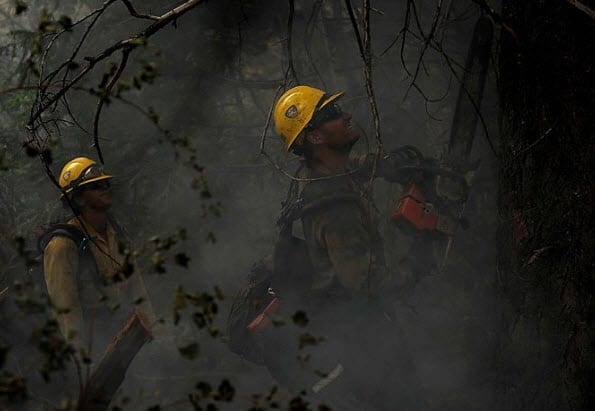According to catastrophe modeling firm AIR Worldwide, earlier this week, wildfires-exacerbated by unseasonably warm temperatures and windy conditions- broke out in the forested terrain of southern Colorado. In fact, Colorado Springs hit 98° on June 10, setting a record for this early in the year. According to the El Paso County Sheriff’s office, as of June 14, 2013, at least four wildfires are currently active across the state.
“The largest of the blazes, the Black Forest fire, doubled in size from Wednesday to Thursday, growing to 15,700 acres (25 square miles),” said Tomas Girnius, senior scientist at AIR Worldwide. “The fire is situated about 10 miles east of where the Waldo Canyon Fire burned 347 homes and caused USD 353 million in insurance claims last year.”
On Thursday, powerful winds pushed the fire toward densely populated subdivisions of Colorado Springs, Colorado’s second largest city. This forced the mandatory evacuations of thousands of residents. Local officials estimate that the fire is now about 5% contained. Colorado Governor John Hickenlooper has declared disaster emergencies for the Black Forest fire and for two other fires in the state.
Girnius observed, “The dry conditions are not limited to Colorado; drought is currently affecting the entire western United States, and persistent hot and dry conditions, coupled with the potential of wind and lightning in some areas, have exacerbated overall fire risk.”
Firefighters continue to battle the Black Forest fire while other fires are seeing some containment or slower growth. Winds slowed down to 10 mph, providing a respite to the area firefighters. More than 800 firefighters are battling the blaze, with support from active-duty military and National Guard troops. Several air tankers and helicopters are fighting the fire from above Friday, dropping fire retardant.
The substantial amount of fuels on the forest floor-in the form of matted pine needles, pine cones, and grasses-continues to be a major problem in attempting to contain the Black Forest fire.
Girnius noted, “In forests, fire spread rates can be quite complex. Forest undergrowth fires may be fairly slow to spread, but they can be exceedingly difficult for firefighters to access and put out. In relative terms, undergrowth fires are not particularly dangerous, but if they manage to spread vertically into the canopy, they can become full-fledged crown fires.”
The National Weather Service has issued a ‘red flag warning’ for El Paso County. A red flag warning means conditions exist to promote “explosive fire growth potential.”
According to AIR, no wildfire in Colorado history has destroyed more homes. Last year’s Waldo Canyon fire destroyed 346 buildings. Local officials report that, so far, the Black Forest fire has destroyed 379 homes and caused two fatalities. More than 38,000 residents have evacuated already, and city officials warned residents in Colorado Springs to prepare to evacuate at any time. By Thursday evening, the total evacuation zone for the fire covered 24 square miles in the region northeast of Colorado Springs.
Reports showed smoking ruins where million-dollar homes and weekend cabins once stood and AIR estimates that the total value of residential properties within that perimeter is close to USD 500 million.
Girnius noted, “Residential construction in the Colorado Springs area is dominated by low-rise wood frame houses. Perhaps 10 – 20% have masonry exterior walls – and are therefore somewhat less vulnerable. The relatively few commercial buildings in the area of the fire are of more mixed construction, with wood being common for smaller commercial buildings.”
Three smaller fires are burning elsewhere in Colorado. The Royal Gorge, located 55 miles southwest of the Black Forest fire, has scorched 3,162 acres and was officially reported to be 40% contained. According to local officials, it destroyed a historic bridge and more than 20 structures. The Big Meadows and Kilkus fires are not currently posing a threat to property. Having several fires burning simultaneously has diluted available resources for fire suppression.
According to AIR, although somewhat cooler temperatures are forecast for the next two days, there is little prospect for any significant rainfall. With the air still remaining extremely dry and temperatures very hot, the situation in Colorado remains extremely dynamic.
AIR is monitoring events in Colorado and will provide updates as necessary.
